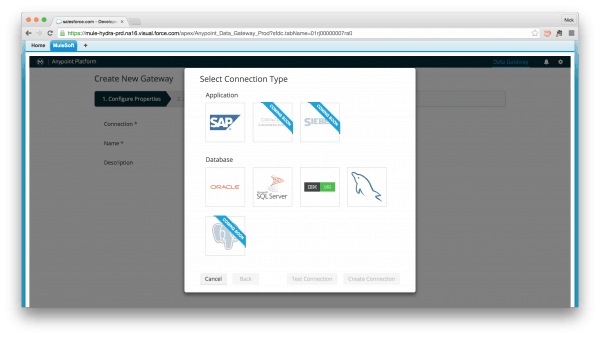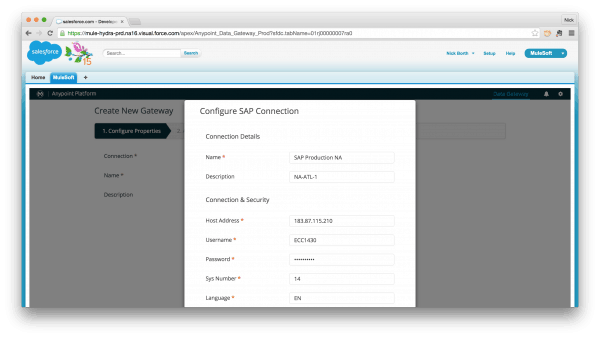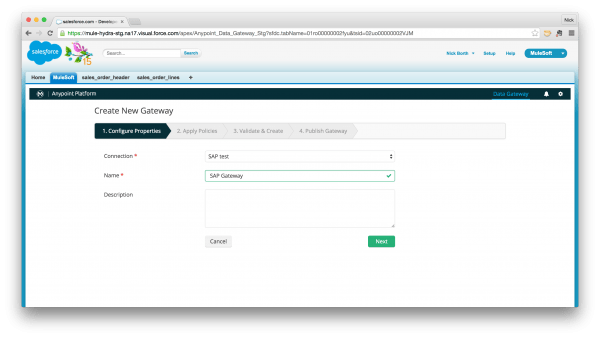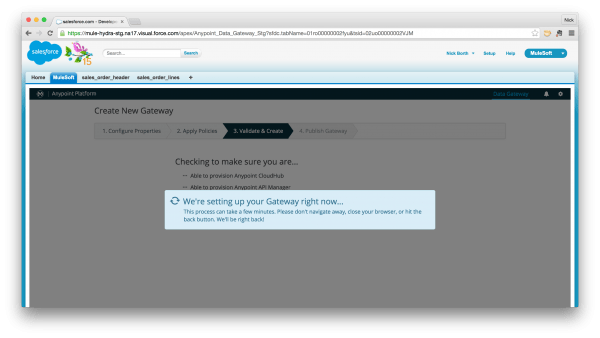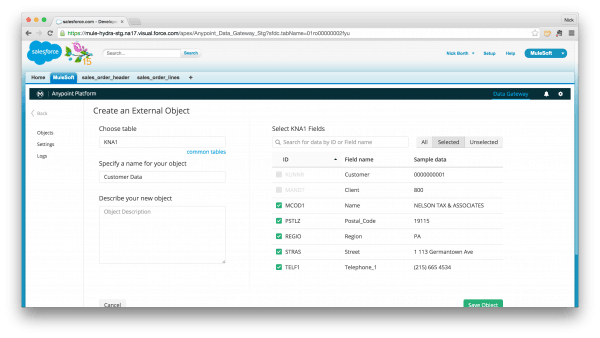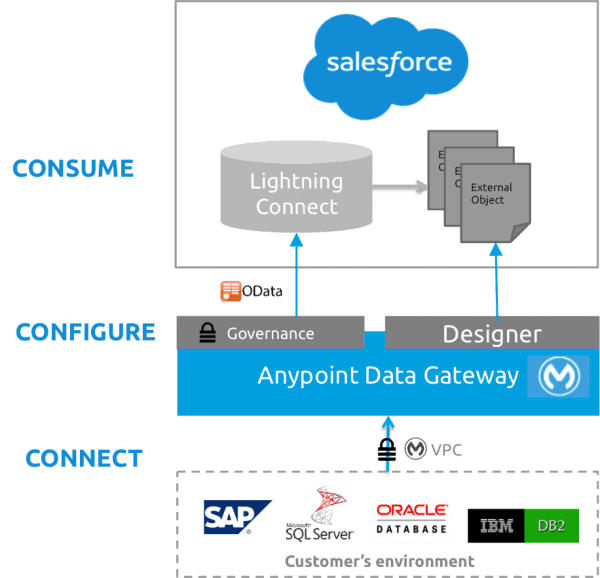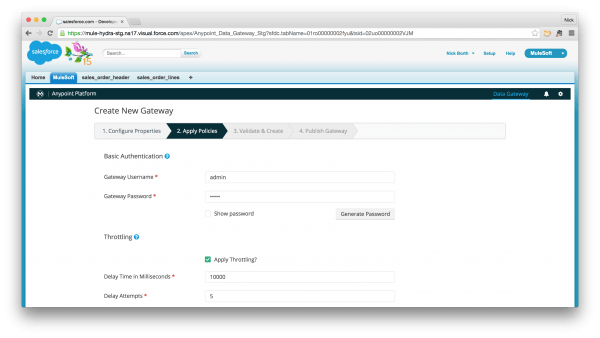On Wednesday, February 25th, MuleSoft released a major update to our Anypoint Data Gateway for Salesforce Lightning Connect. Since unveiling in November 2014, we have enhanced the product to include several key capabilities that accelerate time-to-value in connecting Salesforce to external data sources. Our goal is for business users to easily configure basic integrations and better align the actual data used for business needs and use cases. We’re also very focused on the need to provide governance for data and integrations, while supporting the on-going trend of providing IT tools as a service. Let’s take a look at some of the features of this release:
Near instant connectivity to complex data sources
Anypoint Data Gateway allows users to configure vs. program read-only connections to 5 vital data sources: SAP, Oracle databases, Microsoft SQL Server, IBM DB2 and MySQL.
The operative term is “configure” because users don’t necessarily need deep technical skills to use Anypoint Data Gateway. An easy-to-use design environment in Salesforce and guided configuration allows Salesforce admins, business analyst, and other non-technical users to view the data they need.
Let’s have a look at how it works:
You are able to configure a connection to a supported data source in order to establish the underlying “dial tone” for a Data Gateway.
Once successfully connected, you then simply name and deploy your gateway
Business-friendly tools to access your data
Salesforce Lightning Connect uses the concept of “external objects” to manifest data within the Salesforce ecosystem. The challenge: data residing within databases or applications does not naturally align to the structure of an external object. That’s where the Object Designer interface comes in:
You are able to navigate database tables, and related fields to assemble external objects on the fly. In addition, IT gains a greater level of control regarding what data is made available for consumption by end users. Here, objects are designed to include a schema of must-have information only. Couple this with the fact that Salesforce Lightning Connect is predicated upon the principles of data virtualization, and organizations begin to shift their integration model from synchronization of all/many in the hope of covering the needs of a few, to on-demand queries, that are consumed real-time, and include only the relevant information that a user requires in that moment.
Governance, security, and modern, hassle-free administration
Often, enterprises struggle with the concept of democratizing access to back office data. IT fears that by providing more open access to data; the business may be exposed to risk. Here are a few measures that we’ve taken to combat such concerns:
On-premises connectivity through Virtual Private Cloud (VPC) – what better way to connect the cloud to your environment? VPC allows you to establish hybrid cloud-to-on-premises through VPN, so you don’t have to expose your ecosystem to the vulnerabilities associated with opening a port or making a data source publicly addressable. Moreover, you avoid the fragile nature of agent-based approaches, where a desktop/server agent is installed and communicates with the cloud via reverse proxy.
Providing additional security, Anypoint Data Gateway harnesses the power of the Anypoint Platform for APIs to provide basic authentication and throttling as management policies that can be applied to your gateway’s OData service – layering an additional level of protection on your data.
Ready to get started?
Have we piqued your interest? Are you ready to democratize your data, and accelerate Salesforce integrations through Lightning Connect + Anypoint Data Gateway? Check out and install the product on AppExchange, and register for Anypoint Platform, including CloudHub and the API Platform.





